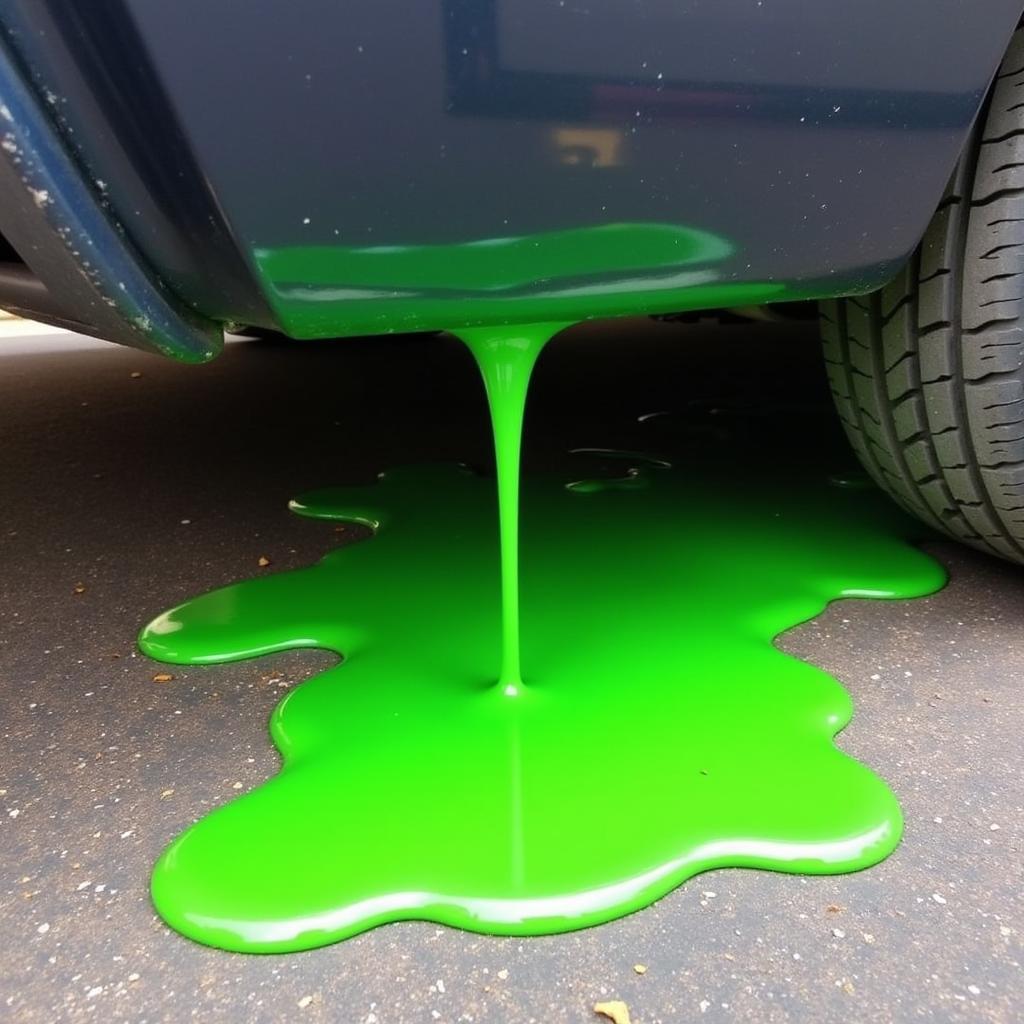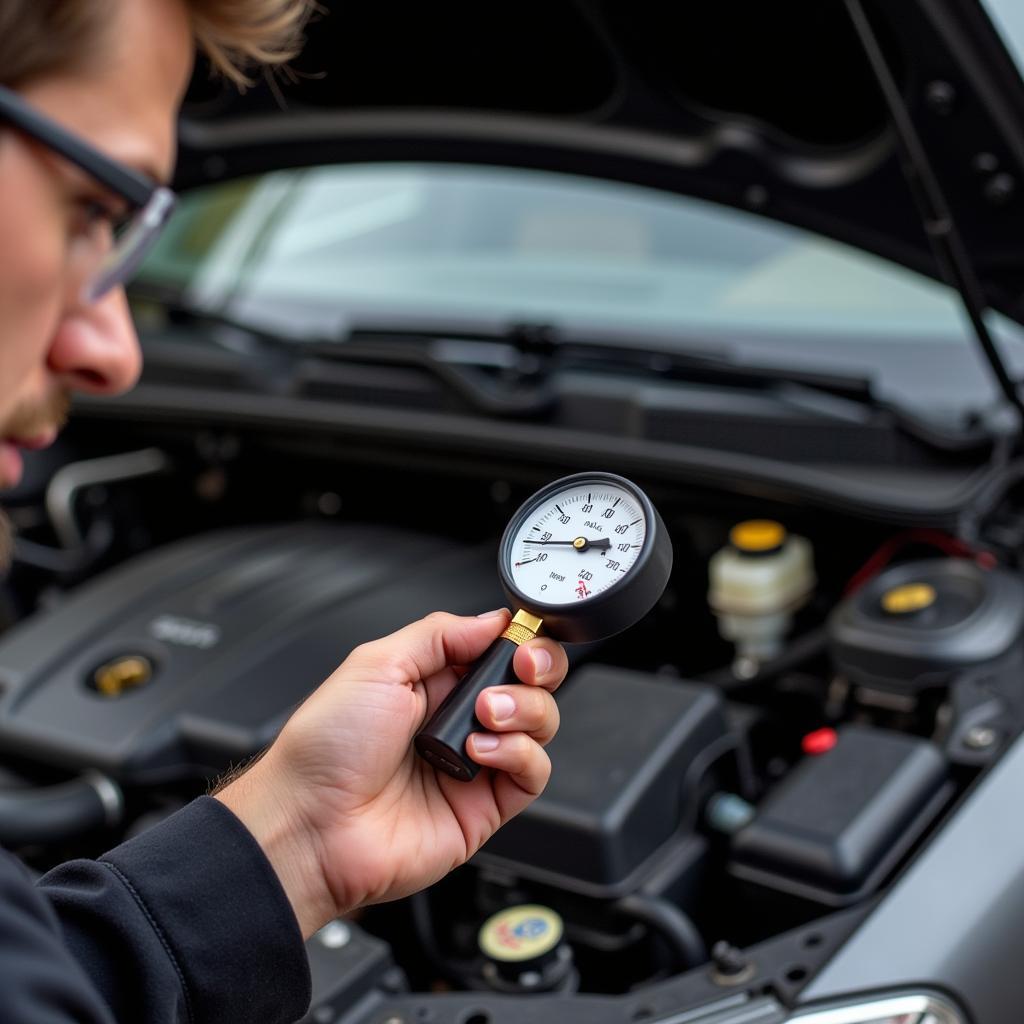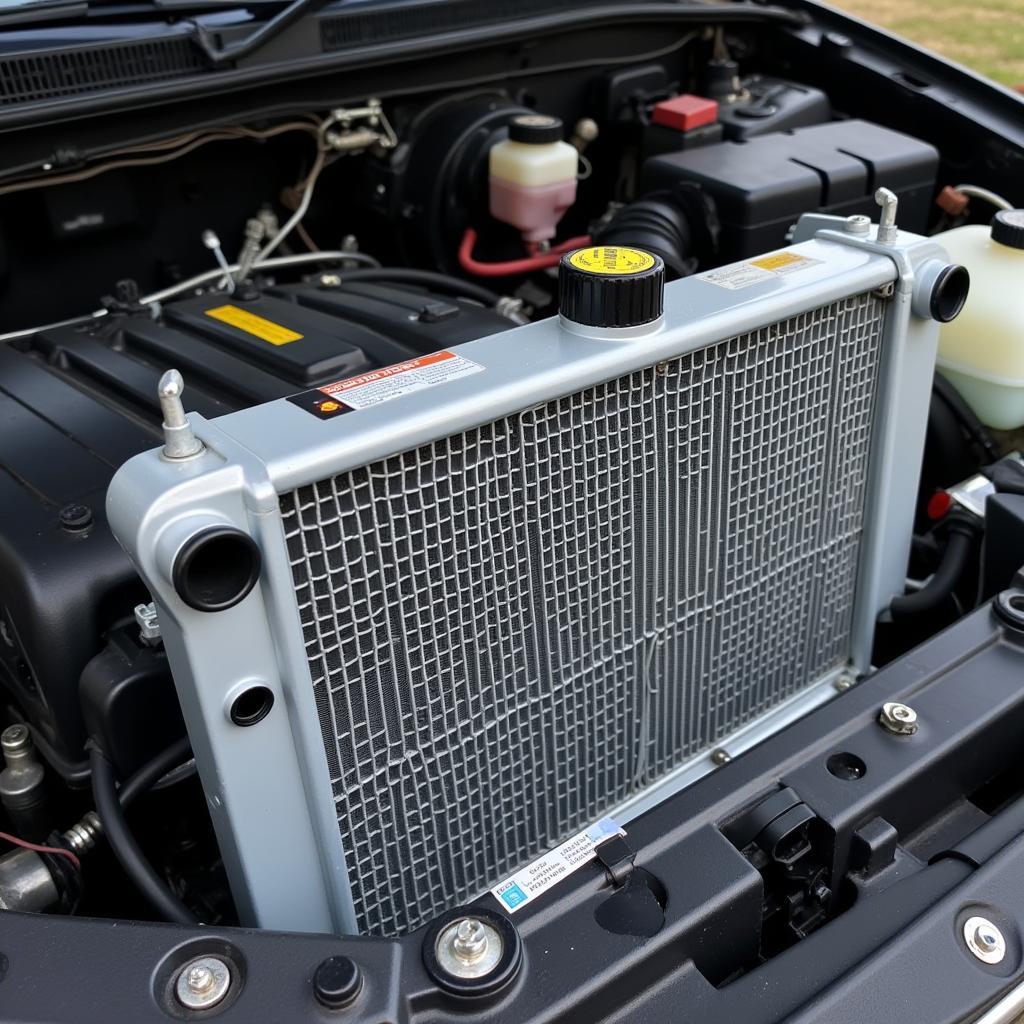A malfunctioning radiator can lead to serious engine damage. Knowing the Signs Of Car Radiator Problems is crucial for preventing costly repairs. This article provides a comprehensive guide to identifying and understanding those warning signs, enabling you to take timely action and keep your vehicle running smoothly. Recognizing these early indicators allows you to address minor issues before they escalate into major headaches.
After a long drive, your car’s engine relies heavily on the radiator to prevent overheating. However, various factors can cause the radiator to malfunction. Being aware of these signs of car radiator problems is the first step to keeping your car in good working order. To learn more about other car issues, check out this resource on car CD stacker problems.
What are the Common Signs of Car Radiator Problems?
Several key indicators can point towards a problematic radiator. These signs can range from obvious leaks to more subtle performance issues. Being vigilant and recognizing these symptoms is crucial for timely intervention.
Overheating Engine
Perhaps the most glaring sign of radiator trouble is an overheating engine. When your radiator isn’t functioning properly, it can’t effectively cool the engine, leading to a dangerous rise in temperature. Keep an eye on your temperature gauge; consistent high readings indicate a potential radiator issue.
Low Coolant Levels
If you notice your coolant levels are consistently low, it’s a red flag. A leak in the radiator, hoses, or other components of the cooling system can cause coolant loss. Regularly checking your coolant levels is a simple yet essential preventative measure.
Coolant Leaks
Visible coolant leaks are a clear indication of a problem. Check for puddles under your car, especially after it’s been parked for a while. The color of the coolant can vary, but it’s typically green, orange, or pink. Look for leaks around the radiator itself, hoses, and connections.
 Coolant Leak Under Car
Coolant Leak Under Car
Sludge in the Coolant
If your coolant appears rusty, oily, or contains sludge, it suggests internal radiator problems. Contamination can clog the system, hindering heat transfer. This may require a radiator flush or even replacement.
Temperature Fluctuations
Erratic temperature gauge readings can also indicate a radiator problem. If the gauge swings wildly between hot and cold, or if it takes an unusually long time for the engine to reach operating temperature, it could signal a faulty thermostat, a low coolant level, or a failing water pump, all related to the cooling system.
Heater Malfunction
A malfunctioning heater can be a surprising symptom of radiator trouble. The radiator plays a role in providing heat to the cabin. If your heater isn’t producing warm air, it could be due to a coolant leak, a blocked heater core, or other issues within the radiator system.
“A common misconception is that radiator problems only occur in older cars,” says John Miller, a seasoned automotive technician at a reputable repair shop in Texas. “Modern vehicles are also susceptible, especially if regular maintenance is neglected.”
How to Troubleshoot Car Radiator Problems
If you suspect a radiator problem, there are a few things you can do to troubleshoot the issue before seeking professional help.
- Check the Coolant Level: Ensure the engine is cold before opening the radiator cap. If the level is low, top it off with the correct coolant type.
- Inspect for Leaks: Carefully examine the radiator, hoses, and connections for any visible signs of leakage.
- Check the Radiator Fan: With the engine running, observe the radiator fan. It should cycle on and off as needed to cool the engine. If it’s not working, it could be a faulty fan motor, relay, or fuse.
- Pressure Test the Cooling System: A pressure test can help pinpoint leaks that aren’t readily visible. This typically requires specialized equipment.
 Mechanic Pressure Testing Radiator
Mechanic Pressure Testing Radiator
Maintaining Your Car’s Radiator
Preventative maintenance is key to avoiding radiator problems. Regularly flushing your cooling system, inspecting hoses for cracks and wear, and addressing minor issues promptly can save you from costly repairs down the road.
“Regular maintenance can significantly extend the life of your radiator and prevent major engine damage,” adds Sarah Chen, a certified automotive engineer with over 20 years of experience. “Simple checks like inspecting hoses and maintaining proper coolant levels can make a big difference.”
Conclusion
Being aware of the signs of car radiator problems can help you avoid costly repairs and ensure your vehicle’s longevity. By understanding these indicators and taking proactive steps, you can maintain a healthy cooling system and enjoy a trouble-free driving experience. If you’re experiencing persistent issues, it’s always best to consult with a qualified mechanic. For further assistance with your car problems, you can contact us at AutoTipPro. Our phone number is +1 (641) 206-8880 and our office is located at 500 N St Mary’s St, San Antonio, TX 78205, United States.
 Healthy Car Radiator
Healthy Car Radiator
FAQs
- How often should I flush my radiator? It’s generally recommended to flush your cooling system every two years or according to your vehicle’s manufacturer recommendations.
- What type of coolant should I use? Refer to your owner’s manual for the correct coolant type for your specific vehicle. Using the wrong type can damage the cooling system.
- Can I drive with a leaking radiator? Driving with a leaking radiator can lead to engine overheating and serious damage. It’s best to have the issue addressed immediately.
- How much does it cost to replace a radiator? The cost of radiator replacement varies depending on the make and model of your vehicle, but it can range from a few hundred to over a thousand dollars.
- How can I prevent radiator problems? Regular maintenance, including coolant flushes and hose inspections, is the best way to prevent radiator problems.
- What causes a radiator to overheat? Several factors can contribute to radiator overheating, including low coolant levels, leaks, a faulty thermostat, or a malfunctioning radiator fan.
- What is the difference between coolant and antifreeze? Antifreeze is the concentrated form of coolant, which is mixed with water before being added to the cooling system.





Leave a Reply